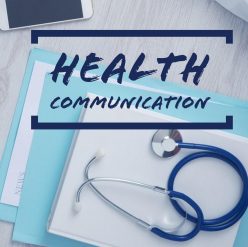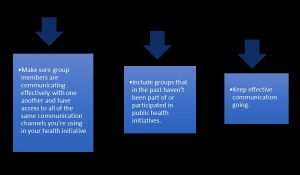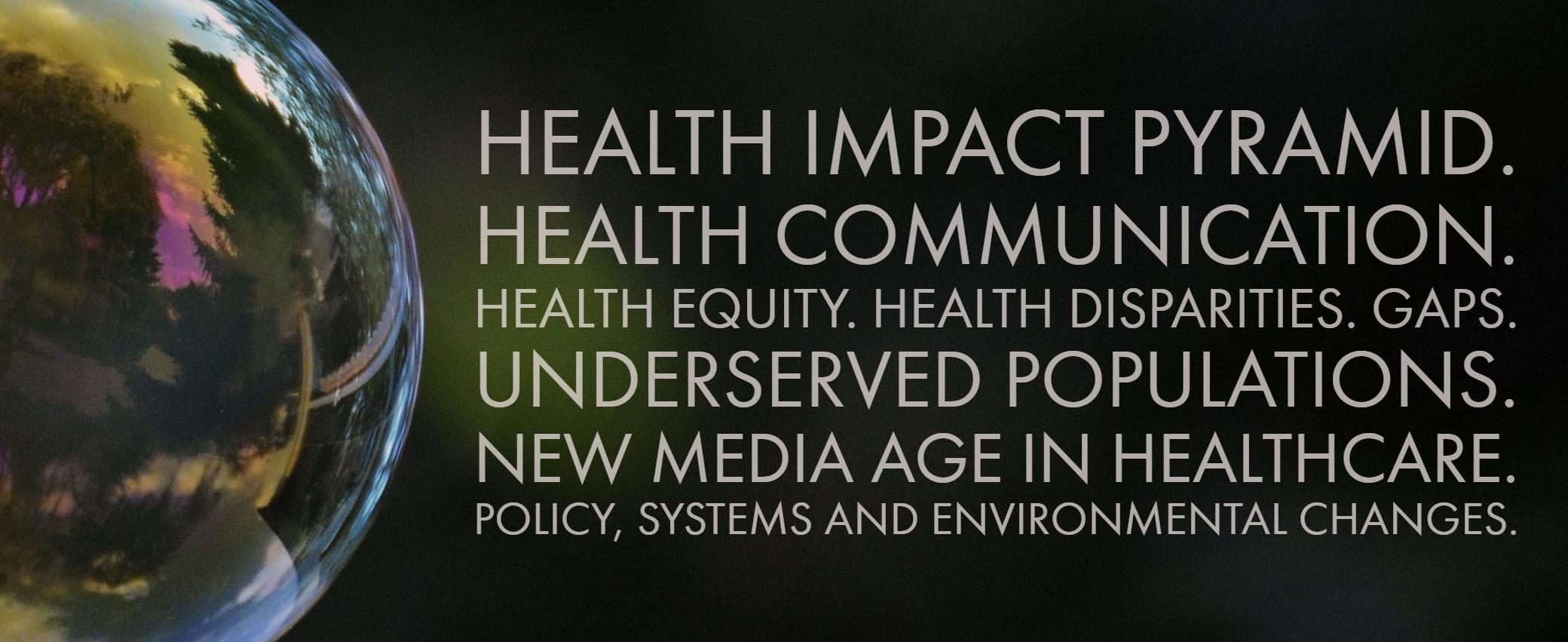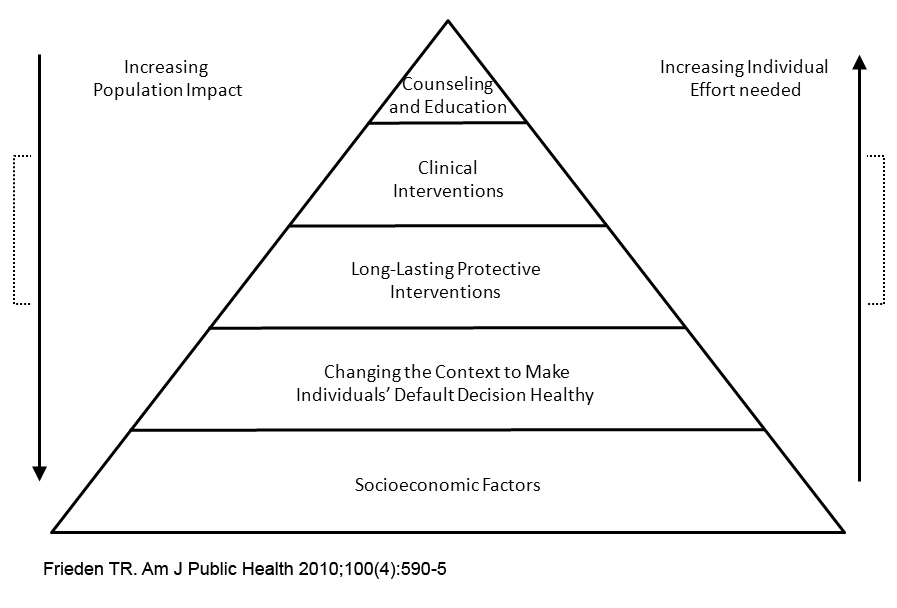The following sequence of events illustrates how health communications fit into the topic of health equity and disparities.
► Employing a theory picker to aid in the selection of the best possible intervention model
► to in turn design an effective health initiative
► which is subsequently implemented in an appropriate manner
► and delivers visible and measurable results
As health communicators, it is crucial to remember the following when addressing social determinants of health inequities:
- Make sure group members are communicating effectively with one another and have access to all of the same communication channels you’re using in your health initiative.
- Include groups that in the past haven’t been part of or participated in public health initiatives.
- Keep effective communication going.
With health communication, we can address specific factors when designing strategies to prevent health conditions, this results in maximizing health impact and advancing health equity.




